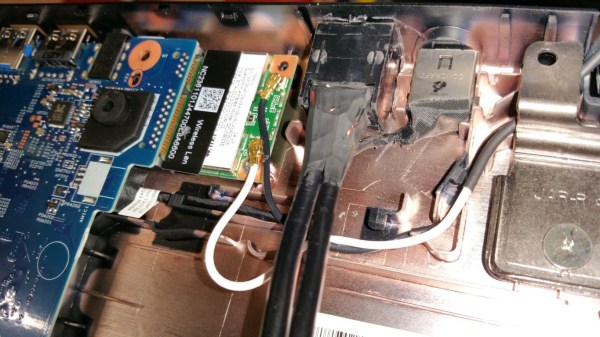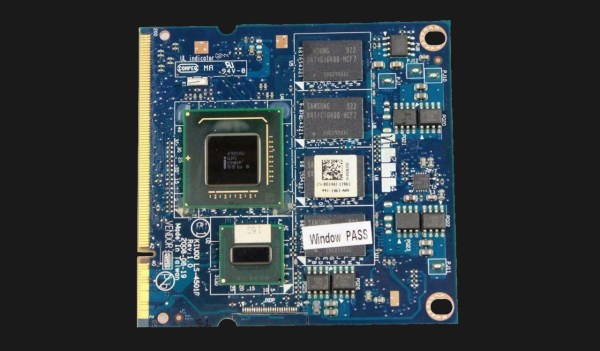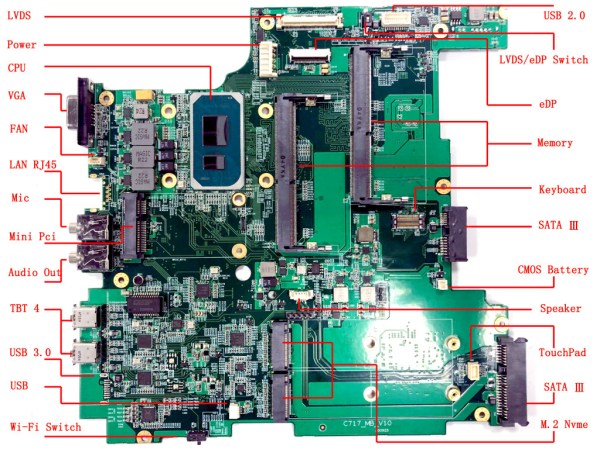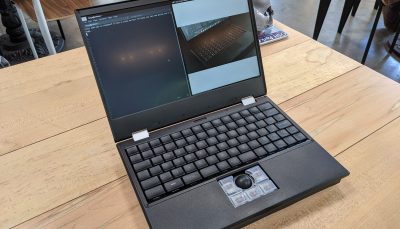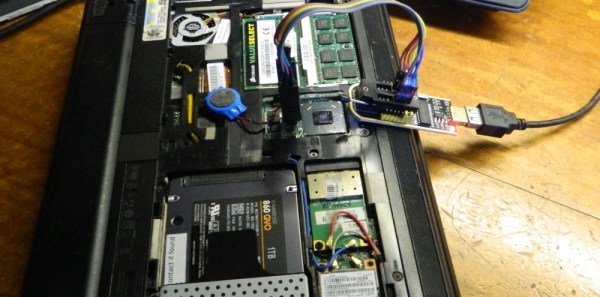When your 5-year-old laptop dies it’s usually time for a replacement. But [Andrew Menadue]’s Novena laptop is fully open-source. He has full access to all the documentation, so he decided to try his hand at repairing it instead. The power supply circuit board went up in smoke one day — he attributes this to poor battery health due to him not using it frequently enough. Given his usage pattern, he decided to switch the Novena into a desktop machine.
He made the conversion with a new pass-through power supply board, and the computer booted up but with no display. It seems that the power supply failure took out additional circuits as well. [Andrew] goes down a deep rabbit hole of board and chip swapping, all to no avail. Eventually the display suddenly springs to life, and he concludes the problem was with the EEPROM configuration settings and not LCD display hardware.
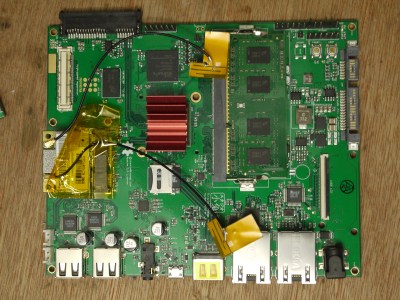
It’s comforting to know that you can easily spin a replacement PCB for your computer when needed. But this situation is far from mainstream. Furthermore, all projects, open-sourced or not, face the issue of part obsolescence, even Novena. Back in 2019 founders [Bunnie] and [Xobs] issued an end-of-life announcement on the project’s five year anniversary for this very reason. The fact that Novena availability even lasted five years was due to up-front purchases of critical parts.
We wrote about the Novena way back in 2014, and more recently the MNT Reform project. What are your thoughts on these open source laptop projects? Do you have any laptops that you’ve rehabilitated after five or more years? Let us know in the comments below.


